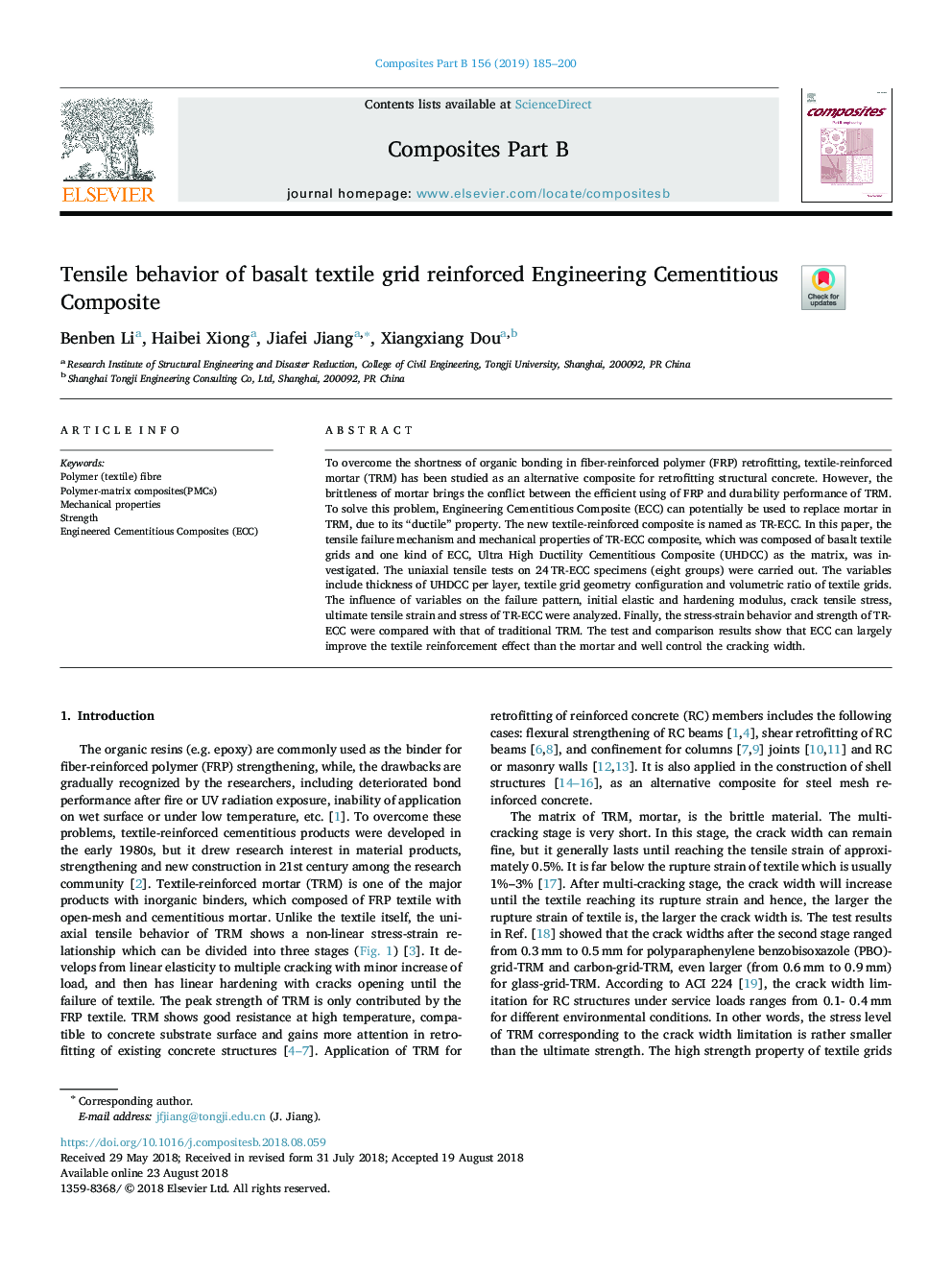| Article ID | Journal | Published Year | Pages | File Type |
|---|---|---|---|---|
| 10134020 | Composites Part B: Engineering | 2019 | 16 Pages |
Abstract
To overcome the shortness of organic bonding in fiber-reinforced polymer (FRP) retrofitting, textile-reinforced mortar (TRM) has been studied as an alternative composite for retrofitting structural concrete. However, the brittleness of mortar brings the conflict between the efficient using of FRP and durability performance of TRM. To solve this problem, Engineering Cementitious Composite (ECC) can potentially be used to replace mortar in TRM, due to its “ductile” property. The new textile-reinforced composite is named as TR-ECC. In this paper, the tensile failure mechanism and mechanical properties of TR-ECC composite, which was composed of basalt textile grids and one kind of ECC, Ultra High Ductility Cementitious Composite (UHDCC) as the matrix, was investigated. The uniaxial tensile tests on 24â¯TR-ECC specimens (eight groups) were carried out. The variables include thickness of UHDCC per layer, textile grid geometry configuration and volumetric ratio of textile grids. The influence of variables on the failure pattern, initial elastic and hardening modulus, crack tensile stress, ultimate tensile strain and stress of TR-ECC were analyzed. Finally, the stress-strain behavior and strength of TR-ECC were compared with that of traditional TRM. The test and comparison results show that ECC can largely improve the textile reinforcement effect than the mortar and well control the cracking width.
Keywords
Related Topics
Physical Sciences and Engineering
Engineering
Engineering (General)
Authors
Benben Li, Haibei Xiong, Jiafei Jiang, Xiangxiang Dou,
